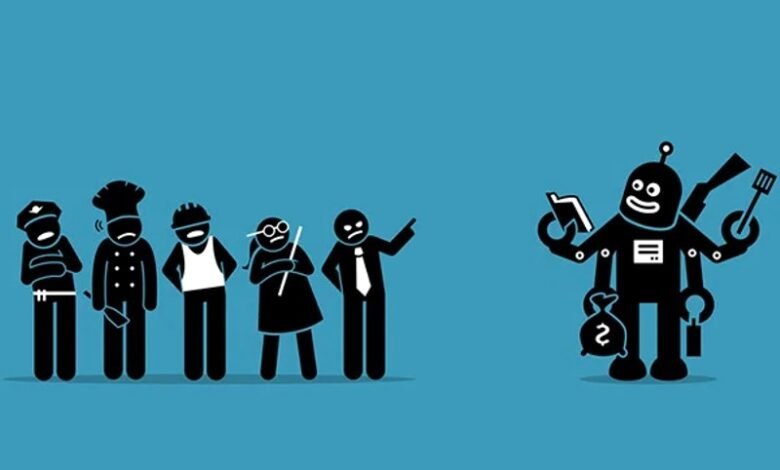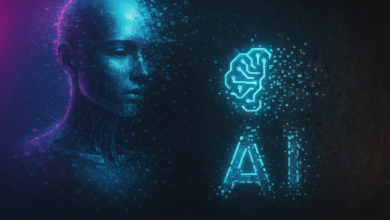
The rise of automation has transformed the global workforce landscape, sparking debates among economists, policymakers, and employees. From factory floors to high-tech offices, automation is no longer a futuristic concept but a current reality. With advancements in artificial intelligence (AI), machine learning, and robotics, industries are increasingly incorporating automated systems to enhance efficiency, reduce operational costs, and maintain competitive advantages. But what does the data say about the impact of automation on human jobs?
The Evolution of Automation in the Workplace
Automation isn’t new. It began with the Industrial Revolution, when mechanical innovations replaced manual labor in manufacturing. Today, we’re experiencing a new wave often referred to as the Fourth Industrial Revolution, driven by digital technologies. This transformation goes beyond physical labor, affecting sectors like finance, healthcare, and education. According to a report from McKinsey & Company, nearly 50% of current work activities are technically automatable by adapting existing technologies.
Job Displacement vs. Job Creation
A common fear is that automation will lead to mass unemployment. While it is true that automation replaces certain tasks, it also creates new jobs. Historical data supports this dynamic. For instance, the rise of the internet eliminated roles like typists but created entire industries around software development, cybersecurity, and digital marketing. According to the World Economic Forum’s Future of Jobs Report, automation is expected to displace 85 million jobs by 2025 but create 97 million new roles better suited to the new division of labor between humans, machines, and algorithms.
The Types of Jobs Most Affected
Automation affects different jobs to varying degrees. Routine, predictable tasks are the most susceptible. Manufacturing, retail, and transportation sectors are particularly exposed. For example, self-checkout kiosks, automated warehouses, and driverless vehicles have already begun transforming these industries. On the other hand, jobs that require creativity, emotional intelligence, and complex decision-making—such as those in healthcare, education, and the arts—are less likely to be fully automated in the near future.
Skills for the Future
As the nature of work changes, so too must the skills of the workforce. Data reveals a growing demand for digital literacy, critical thinking, and interpersonal communication. Upskilling and reskilling are becoming essential strategies for both employees and employers. Educational institutions and corporate training programs are increasingly focused on preparing individuals for hybrid roles that combine technical know-how with human-centric capabilities. Investment in lifelong learning is no longer optional but a necessity in the age of automation.
Economic and Demographic Disparities
The impact of automation is not uniform across regions or demographics. Lower-income workers and those with less education are more vulnerable to displacement. A report from the Brookings Institution found that automation exposure is highest among workers in rural areas, younger employees, and ethnic minorities. This raises significant concerns about economic inequality and the digital divide. Policymakers are urged to design inclusive strategies that address these disparities through targeted investments in education, infrastructure, and social safety nets.
The Role of AI and Machine Learning
One of the most transformative technologies driving automation is AI. Through machine learning algorithms, computers can now perform tasks such as language translation, image recognition, and predictive analytics. These capabilities are being used across industries to streamline operations. For example, in finance, AI is revolutionizing fraud detection and customer service through chatbots and automated advisors. While these tools improve productivity, they also necessitate a reevaluation of workforce roles and responsibilities.
Case Studies: Real-World Examples
Several companies have successfully implemented automation without significantly reducing their workforce. For instance, Amazon uses thousands of robots in its fulfillment centers but continues to employ hundreds of thousands of workers. The company argues that automation helps workers focus on more complex tasks and improves safety. Similarly, Siemens has integrated robotics and AI into its manufacturing processes while simultaneously investing in employee training programs to upgrade skills and support career transitions.
Public Perception and Worker Sentiment
Public attitudes toward automation are mixed. According to a survey by the Pew Research Center, about 48% of Americans believe automation has mostly hurt workers, while only 22% think it has helped. Fear of job loss, reduced wages, and increased stress due to constant adaptation are common concerns. However, there is also recognition that automation can reduce mundane tasks, enhance job satisfaction, and improve work-life balance when implemented thoughtfully.
Government and Policy Response
Governments worldwide are grappling with how to respond to the rise of automation. Policy options include investing in STEM education, providing tax incentives for companies that retrain workers, and expanding unemployment insurance and universal basic income pilots. The European Union, for example, has introduced initiatives aimed at fostering digital skills and protecting worker rights in automated workplaces. In the U.S., legislation is being considered to support training and transition programs at both federal and state levels.
The Future Outlook
The trajectory of automation suggests a future where humans and machines collaborate rather than compete. Experts predict a surge in augmented intelligence, where technology enhances human capabilities rather than replacing them. Fields like telemedicine, remote education, and smart manufacturing exemplify this trend. As we look ahead, the focus should be on designing systems that empower human workers, ensure equitable access to opportunities, and promote sustainable economic growth.
Conclusion
The data shows that automation is a double-edged sword. It presents challenges such as job displacement and economic inequality but also offers opportunities for job creation, innovation, and improved quality of life. The key to navigating this transition lies in strategic planning, inclusive policies, and a commitment to education and upskilling. Rather than viewing automation as a threat, society should embrace it as a tool for progress, provided that the human element remains central to technological advancement.







